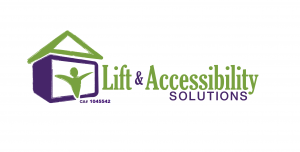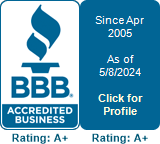What Businesses Should Know About ADA Compliance
The Americans with Disabilities Act (ADA) is a Federal law that first went into effect on January 26, 1992. Under this law, it is prohibited to exclude people with disabilities from performing everyday activities. These activities include going to a movie, dining in restaurants, shopping, and access to all public businesses. Recognizing that many small businesses could face financial hardship to comply with the ADA, lawmakers had the foresight to make the requirements for facilities built before the law less strict than the requirements for businesses built or modified after the law went into effect.
So what should businesses know about ADA compliance? Since all new buildings are constructed with ADA considerations in mind, let’s look at any existing business facilities. For this discussion, any business that provides goods and/or services to the public falls under the ADA. To comply with the ADA, businesses must remove physical barriers which would exclude disabled people from gaining access to the business. Enforcement of the ADA is typically based on the resources of the business. A business with large cash resources would be required to meet all aspects of the ADA in a timely manner. Small businesses with limited resources are required to meet the requirements of the ADA as they can afford to pay for them. Here is a list of the six major items required to comply with the ADA in order of importance:
1) Accessible Parking – The first thing businesses should look at is van and car parking spaces for disabled customers. They should allow enough room for wheelchair entry and exit from the vehicle.
2) Accessible Entrance – The main consideration here is stairs or steps. If there are one or more steps to enter the business, a ramp or lift must be provided to help disabled persons access the business.
3) Entrance Doorways – All entrances to a business should have doorways that are a minimum of 36 inches wide to allow wheelchair access, and the doors should also have loop or lever-style handles instead of knobs to be in compliance.
4) Shelves/Maneuvering Space – After you have provided access inside your business, consider the space required to maneuver wheelchairs or other assisting devices around. Widen aisles where necessary and allow enough space to turn.
5) Sales and Service Counters – Counters that are 36 inches long and 36 inches or less in height are ADA compliant.
6) Seating and Tables – Fixed tables must be provided in an eating area that meet the following requirements:
- Height – 28-24 inches
- Knee Clearance Height – 27 inches’ minimum
- Floor Area – 30 inches by 48 inches
- Knee Clearance Depth – 19 inches minimum under the table
The ADA was signed into law to allow the 50 million plus disabled Americans access to public businesses that most people enjoy. All public businesses must comply with the ADA in the best way they can without financial hardship. Remember these six considerations, and if you need any assistance, contact an accessibility solutions company.







There are no comments yet, but you can be the first